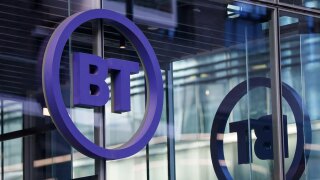Huawei to build €200m factory in France
Huawei has announced plans to invest €200 million in a network equipment factory in East France.
The new site will first employ 300 people before increasing to 500 in the long-term with the products made going to its European customers.
The news comes despite Huawei facing a ban on the use of its solutions across France’s telecoms networks. According to Reuters, the factory is part of Huawei’s efforts to ease global concerns that that the Chinese government could use the company’s equipment for spying.
Telefónica, KT and China Unicom unveil MEC Technology
Telefónica, KT Corporation and China Unicom confirm the successful verification of its 5G Multi-access edge computing (MEC) technology for global roaming infrastructure and federation.
MEC roaming mechanism allows mobile users visiting abroad to use nearby MEC infrastructure for optimal MEC experience beyond their home networks. Without this mechanism, mobile users abroad will have to resort to MEC infrastructure located back in its home country, significantly undermining the low-latency feature at the expense of user experience.
The group of companies will share the findings and developments of this project with the GSMA Operator Platform group to help fulfilling the requirements of the Telco Edge Cloud reference architecture with regards to mobility, roaming and federation.
NEC complete Chennai-Andaman & Nicobar Islands Cable for BSNL
NEC Corporation India confirms the completion of Chennai-Andaman & Nicobar Islands Cable for Bharat Sanchar Nigam Limited (BSNL).
NEC India manufactured the fibre optic cable and provided technical assistance during the turnkey implementation.
“Completion of this important project marks a major milestone in NEC's journey of partnering with the Government of India to realize their vision of a truly connected India,” said Aalok Kumar, president & CEO, NEC Corporation India.
“NEC has been steadfast in its commitment to deliver excellence in innovation in all our areas of operation and this project is a testament to our unwavering dedication. We are hopeful that the internet connectivity will open a wide range of opportunities for the people on the islands."
Spanning 2,300km in length with 100Gbps optical waves, the system connects Chennai to Port Blair and the islands of Havelock, Little Andaman (Hutbay), Car Nicobar, Kamorta, the Great Nicobar Islands, Long Island and Rangat.
Google accused of Facebook anti-trust actions
Texas along with nine other US states have sued Google accusing it of working with Facebook in a way that violated anti-trust law.
The tech giant allegedly did so to maintain its dominant position in online advertising. The group asked Google, which is owned by Alphabet Inc, to pay damages and is seeking what it calls “structural relief,” which is believed will require it to divest some of its assets.
For Facebook’s part the lawsuit states: “As internal Google documents reveal, Google sought to kill competition and has done so through an array of exclusionary tactics, including an unlawful agreement with Facebook, its largest potential competitive threat.”
Google supposedly has been abusing its digital advert monopoly by allowing its own exchange to win advertising auctions even when others bid higher and overcharging publishers for adverts. In response, Google called the lawsuit ‘meritless’.
The industry issues 6GHz statement
Companies from across the wider mobile telecoms’ ecosystem have called for the 6GHz band to be reserved as additional spectrum resource for IMT/5G services.
Comprised of vendors and industry bodies like China Mobile, China Telecom, China Unicom, Datang Mobile, ECTA, Elisa, Ericsson, Etisalat, ETNO, GSMA, Huawei, Lenovo, Mi, Nokia, Oppo, Orange, STC, Telefonica, Telia, Unisoc, vivo, ZTE, and Zain; all these companies have pledged to jointly support the WRC-23 6GHz IMT research and drive the development of 6GHz end-to-end industry chain.
The statement comes as a result of the explosive data traffic growth as of late that is expected to continue in the coming years. In addition, the spectrum that is now being made available for IMT/5G (including portions within the 3300-3800MHz range and high bands) will not be enough. Bigger contiguous channels in the mid band range will be required by operators for cost effective future IMT/5G deployments.






